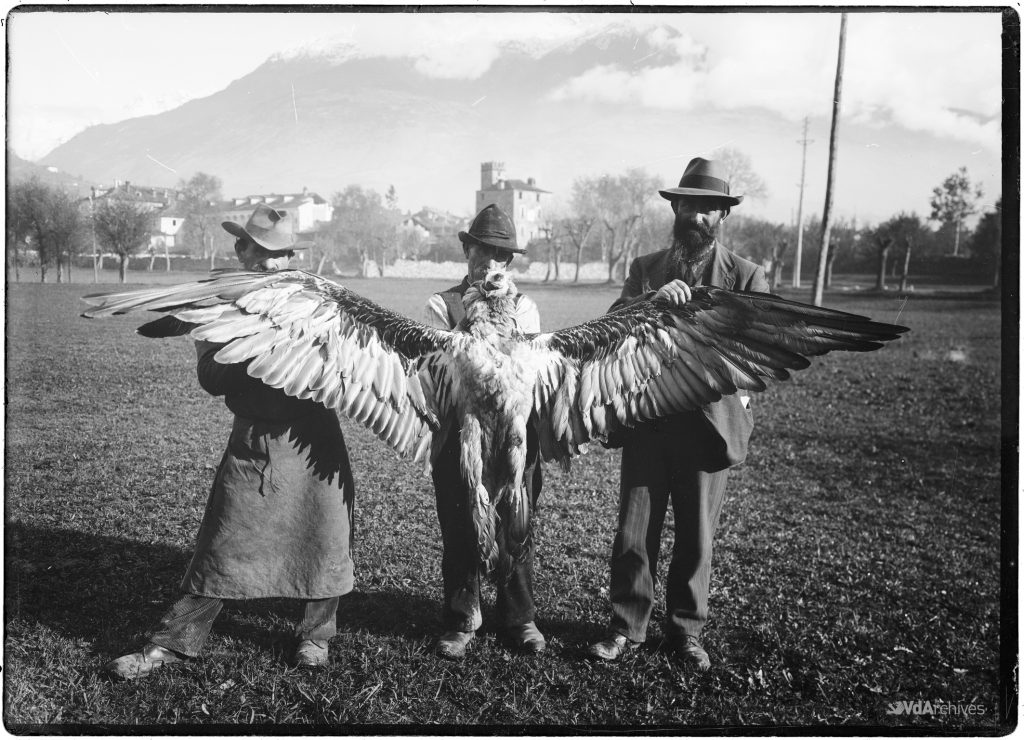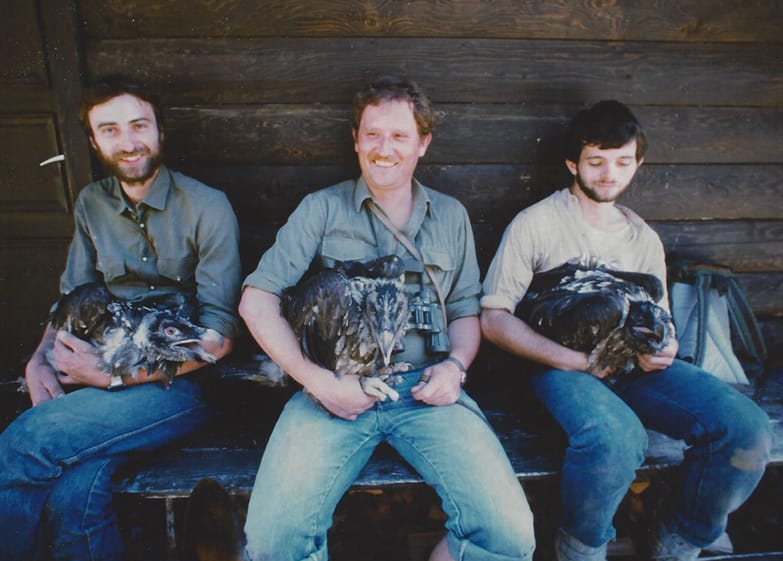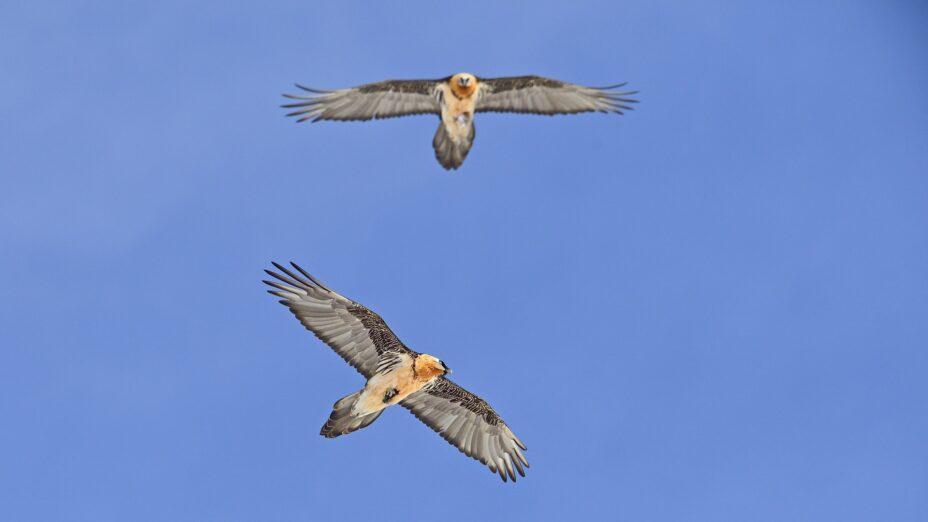Bearded Vulture to the Alps
Pioneers from the Alps come together in the 1970s to reintroduce the species back to the region
- Homepage
- Pages
- Our Work
- Reintroduction And Restocking
- Bearded Vulture to the Alps
Hansruedi Weyrich
The Bearded Vulture population in the Alpine range was driven to extinction during the 20th Century. The species had a bad reputation, considered as the devil bird as people wrongly believed it would steal small children and lamb. This caused its demise, as it was hunted and poisoned, with the last Bearded Vulture shot at Aosta Valley in 1913. To bring the species back, Bearded Vulture pioneers from the Alpine countries established an international programme for breeding and reintroducing Bearded Vultures to the region.
EXTINCTION
In 1913, the species went extinct in the Alps when the last Bearded Vulture was shot and killed at Aosta Valley.

ORIGINS OF THE PROJECT
The reintroduction project brought together a network of experts to bring the species back to the Alps. These included four national parks that stretched across the Alpine region at 200-300 km apart, which were selected as suitable areas for release of Bearded Vultures. In 1986, the first birds were released in Hohe Tauern National Park in Austria. Other releases followed in Haute Savoie in France, Swiss National Park and Stelvio Nationalpark in Switzerland and Italy, and Mercantour Nationalpark and Alpi Marittime Nationalpark in France and Italy. In 1997, the first breeding pair successfully raised a chick in the wild in France.
FIRST RELEASES
Conservationists released the first Bearded Vultures to the Alps in 1986 at Hohe Tauern National Park in Austria.

CONSERVATION ACTIONS AND ACHIEVEMENTS
Between 1986 and 2019, the VCF together with its partners released a total of 227 juvenile Bearded Vultures into the Alps, and today, there are 300 Bearded Vultures, including 60+ breeding pairs, across the Alps. This reintroduction project has sparked the imagination and gathered the support of many stakeholders across the Alpine chain and is considered one of the best wildlife comeback stories of all times! Since their reintroduction into the Alps, we continue to boost the genetic diversity and extend their geographical distribution in the Alps and began reintroducing the species in Andalusia, Maestrazgo and Massif Central.
BEARDED VULTURE NUMBERS TODAY
Thanks to the reintroduction programme and other conservation actions, today there are over 300 Bearded Vultures, including 60+ breeding pairs, across the Alps.

Hansruedi Weyrich
HISTORIC IMAGES OF THE BEARDED VULTURE REINTRODUCTION
CAPTIVE BREEDING OF BEARDED VULTURES
The Bearded Vulture Captive Breeding Network, included in the European Endangered Species Programme (EEP), was established in 1993, and it is now coordinated by Dr Àlex Llopis Dell, who is VCF’s Vultures Captive Breeding Manager. Today, the Vulture Conservation Foundation owns most of the Bearded Vultures in captivity in the world and collaborates with over 40 zoos and breeding centres to coordinate the captive breeding of Bearded Vultures in Europe. A total of 560 juvenile Bearded Vultures were produced in captivity so far, of which 323 were released across Europe to reintroduce or restock the species population to the wild. Every year, the VCF releases juvenile Bearded Vultures reared within the network to different locations across Europe to boost local populations.